Today I was testing a couple of things on my domain model and I have realized the behavior wasn't what I expected.
I have tried to isolate the problem creating a simple Customers-Orders model.
This is my mapping.
Customer:
<hibernate-mapping xmlns="urn:nhibernate-mapping-2.2">
<class xmlns="urn:nhibernate-mapping-2.2" name="NHVariousTests.Domain.Customer, NHVariousTests" table="Customers">
<id name="Code" type="System.Guid">
<column name="CustomerCode" />
<generator class="guid.comb" />
</id>
<version name="Version" type="System.Int32" unsaved-value="0" access="backfield"">
<column name="Version" not-null="true" />
</version>
<property name="Description" type="AnsiString">
<column name="Description" not-null="false" />
</property>
<set name="Orders" access="field.pascalcase-underscore" cascade="all-delete-orphan" inverse="true" lazy="true">
<key column="CustomerCode" />
<one-to-many class="NHVariousTests.Domain.Order, NHVariousTests" />
</set>
</class>
</hibernate-mapping>
Order:
<hibernate-mapping xmlns="urn:nhibernate-mapping-2.2">
<class xmlns="urn:nhibernate-mapping-2.2" name="NHVariousTests.Domain.Order, NHVariousTests" table="Orders">
<id name="Code" type="System.Guid">
<column name="OrderCode" />
<generator class="guid.comb" />
</id>
<version name="Version" type="System.Int32" unsaved-value="0" access="backfield">
<column name="Version" not-null="true" />
</version>
<property name="Description" type="AnsiString">
<column name="Description" not-null="false" />
</property>
<many-to-one class="NHVariousTests.Domain.Customer, NHVariousTests" name="Customer">
<column name="CustomerCode" not-null="true" />
</many-to-one>
</class>
</hibernate-mapping>
My Order class is very simple:
public class Order : EntityGuid
{
public Order()
{
}
public virtual string Description { get; set; }
public virtual Customer Customer { get; set; }
}
and this is my Customer class:
public class Customer : EntityGuid
{
public Customer()
{
this._Orders = new HashSet<Order>();
}
public virtual string Description { get; set; }
#region Orders
private readonly ICollection<Order> _Orders = null;
public virtual ReadOnlyCollection<Order> Orders
{
get { return (new List<Order>(_Orders).AsReadOnly()); }
}
public virtual bool AddOrder(Order order)
{
if ((order != null) && (!this._Orders.Contains(order)))
{
order.Customer = this;
this._Orders.Add(order);
return (true);
}
return (false);
}
public virtual bool RemoveOrder(Order order)
{
if ((order != null) && (this._Orders.Contains(order)))
{
this._Orders.Remove(order);
order.Customer = null;
return (true);
}
return (false);
}
#endregion
}
in this first example I am using a private ICollection<Order> which is created as a HashSet<Order>.
If I run this code:
using (var session = sessionFactory.OpenSession())
{
using (var tx = session.BeginTransaction())
{
var customer = new Domain.Customer() { Description = "ACME Ltd" };
var order = new Domain.Order() { Description = "Coffee" };
customer.AddOrder(order);
order = new Domain.Order() { Description = "Milk" };
customer.AddOrder(order);
session.Save(customer);
tx.Commit();
}
}
I can see the INSERT of the customer and the two INSERT for the orders but I've got an UPDATE for the customer, as well.

If I change my Customer class switching to Iesi collections:
public class Customer : EntityGuid
{
public Customer()
{
this._Orders = new Iesi.Collections.Generic.HashedSet<Order>();
}
public virtual string Description { get; set; }
#region Orders
private readonly ICollection<Order> _Orders = null;
public virtual ReadOnlyCollection<Order> Orders
{
get { return (new List<Order>(_Orders).AsReadOnly()); }
}
public virtual bool AddOrder(Order order)
{
if ((order != null) && (!this._Orders.Contains(order)))
{
order.Customer = this;
this._Orders.Add(order);
return (true);
}
return (false);
}
public virtual bool RemoveOrder(Order order)
{
if ((order != null) && (this._Orders.Contains(order)))
{
this._Orders.Remove(order);
order.Customer = null;
return (true);
}
return (false);
}
#endregion
}
I have got the expected behavior:

This is my EntityGuid class:
public abstract class EntityGuid : EntityWithTypedId<Guid>, IAuditedEntity
{
public EntityGuid()
{
this.CreatedDate = DateTime.Now;
this.UpdatedDate = DateTime.Now;
this.CreatedBy = "";
this.UpdatedBy = "";
}
public virtual DateTime CreatedDate { get; set; }
public virtual string CreatedBy { get; set; }
public virtual DateTime UpdatedDate { get; set; }
public virtual string UpdatedBy { get; set; }
public virtual int Version { get; private set; }
public virtual bool IsTransient()
{
return (EntityWithTypedId<Guid>.Equals(this.Code, default(Guid)));
}
public virtual bool IsTransient(EntityWithTypedId<Guid> obj)
{
return obj != null && Equals(obj.Code, default(Guid));
}
}
Is there anyone who can help me to try and understand what's happening?
Regards.
If someone is really interested to have a look at the code. I've cleaned everything and make it as simple as possible. Can be downloaded here (NH_CollectionProblems).
I am using NHibernate 3.3.2.4000